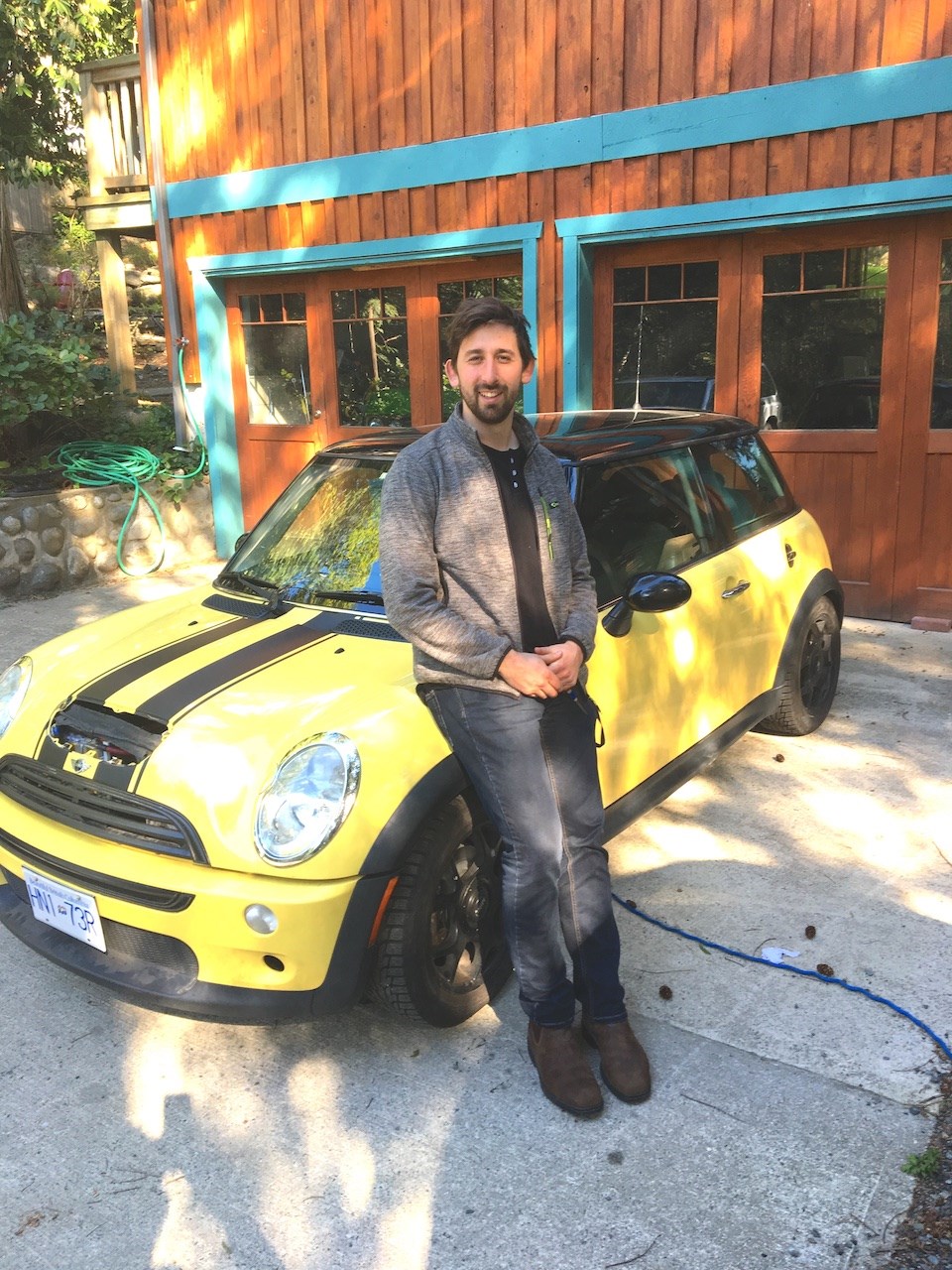When the first electric Mini Coopers drive onto U.S. showroom floors in March, Bowen Island’s McKnights can say they’ve already got one of their own.
It took two years, but local university student Will McKnight and his father Bob converted a 2003 Mini Cooper S. to an electric vehicle.
Will was in his second year of engineering at Simon Fraser University when the idea started percolating.
“I think it was the first time I saw Tesla or something like that,” he said. “I just thought was quite cool.”
But Will had no idea how to build an electric vehicle so it took months of research before he even sat down to plan out the project.
“Little did I know at the time actually how large this project actually was,” says Will.
“This was from the ground up, we didn’t buy a kit or something like that, Will bought components from all over the world,” says Bob.
But before buying anything, Will had to calculate how much energy the car would need for the path he wanted it to drive on a single charge: from Bowen Island to Bob’s store in Vancouver and back.
Will got in contact with Randy Holmquist of Canadian Electric Vehicles Ltd., which sells components and manuals for converting gas guzzlers into electric vehicles, and Holmquist helped with getting parts and instructions.
Bob found a 2003 Mini Cooper going cheap due to a blown clutch and Friday evenings after Bob’s work and Will’s school, father and son set to work, stripping out anything related to the internal combustion engine (which is a lot).
“At the time I was living in Port Moody and I had this teeny little basement,” says Will. “So a lot came out with that and the car took up pretty much the entire space.”
Eventually they moved the car to Bob’s garage on Bowen where they finished the project in about December 2018.
“Looking back I really treasure and cherish those moments. It’s nice obviously working with your father on such a large project,” recalls Will.
“But we also can get quite worked up so yeah, there’s great highs but there’s also massive lows,” he chuckles.
“At some points, I got so frustrated, I almost gave up,” says Bob. “I was just like…this thing’s never gonna work.”
The two would sort out their frustrations in short order.
“I was impressed with his ability to overcome these problems and sort them out one at a time,” says Bob. “Some of them were just nightmares.”
But beyond skill and time, converting a car takes money.
“Economically, it makes zero sense,” says Will. “Especially if you aren’t set up for it. My father, he’s a tradesman…we have a shop and he’s accumulated tools.
“I couldn’t imagine doing that project without a shop.”
Will estimates that they put $23,000 to $25,000 into the car.
Half the cost of building an electric vehicle is the battery adds Will. The McKnights were using salvaged Tesla Model S batteries, the cost for which has dropped hundreds of dollars in the time since says Will.
Part of the cost was that Will wanted to use an alternating current (the industry norm) rather than a direct current motor––something that hasn’t always been possible in the DIY world. Will says that a company (HPEVS) came out with a more affordable motor and controller pair that allows the conversion, though it’s still more expensive than sticking with DC.
“At the time I was really psyched up about regenerative braking and AC motors give you that capability,” he explains.
Will was hoping for 100 km per charge but expecting 80 km. In drives last summer, the car made it 120 km (ish) on a single charge, more than enough to make it to and from Bob’s work (a journey it has done).
But for now, the car is parked on Bowen as Will is off at McMaster University working on a masters of engineering. His work is in a lab where the research revolves around power electronic design with respect to electric vehicles.
As for Bob, he’s impressed by the innovation of the younger generations––including his son.
“It’s inspirational. They’re saying the world may be [in peril], I don’t care. I’m going to the wall. And I’m going to do what I can to try to help.”



